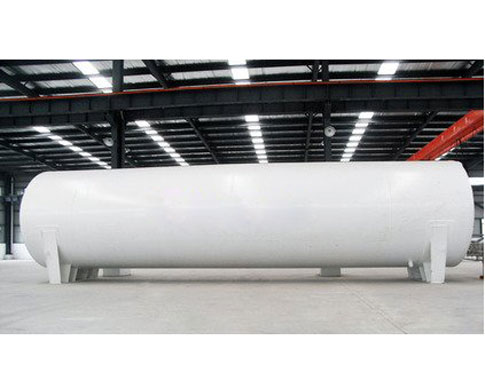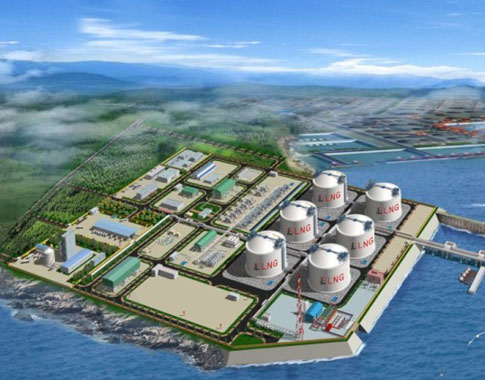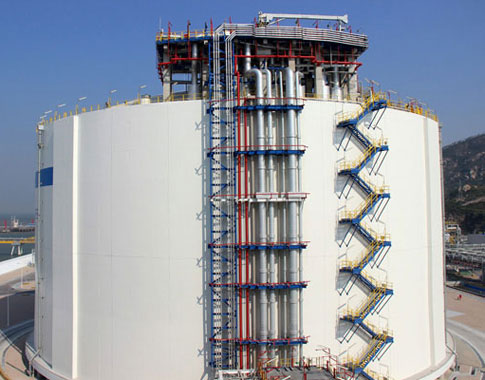



A liquefied natural gas storage tank or LNG storage tank is a specialized type of storage tank used for the storage of Liquefied Natural Gas. LNG storage tanks can be found in ground, above ground or in LNG carriers. The common characteristic of LNG Storage tanks is the ability to store LNG at the very low temperature of -162 °C (-260 °F). LNG storage tanks have double containers, where the inner contains LNG and the outer container contains insulation materials. The most common tank type is the full containment tank. Tanks vary greatly in size, depending on usage
The common characteristic of LNG tanks as following:
● Storing LNG at the very low temperature of -162 °C (-260 °F).
● LNG storage tanks have double containers, where the inner contains LNG and the outer container contains insulation materials.
● The most common tank type is the full containment tank. Tanks vary greatly in size, depending on usage.
● Well-designed and engineered facilities.
● Top quality fire protection and security systems.
● We can help to train qualified operating personnel.


LNG Tank safety:
LNG tanks have double walls: the outside wall is designed to hold LNG vapors and the insulation system around the inner wall which contains the cryogenic liquid. The tanks are constructed of metals or alloys with low coefficients of thermal expansion that do not embitter when in contact with cryogenic fluids (i.e. aluminum or nine-percent nickel steel). Embankments, berms, bunds or dikes surround the tanks and are scaled, as a precaution, to contain any leakage up to 110% in modern facilities. Some LNG tank designs have a reinforced restressed concrete outer tank which is capable of holding the tank contents should the inner tank leak. Explosion risk is minimized by storing LNG slightly above atmospheric pressure so that no air can inadvertently leak into a tank. The inside of the tanks are operated as air free environments to maintain the LNG in an inflammable state that precludes ignition or explosion. If LNG does however escape from a tank or is spilled during transfer it will mix with air and either ignite forming a pool fire or will rapidly vaporize leaving no residue. LNG vapor (i.e. natural gas consisting of >90% methane) becomes flammable when mixed with air but will ignite only when mixed in the range 5% to15% by volume of gas in air. An explosion can result if such a flammable mixture is confined in the presence of an ignition source. The LNG industry has well established safety systems including codes, regulations and standards.
Commonly used structure:
Vertical LNG storage tank
Volume of 50 cubic meters and 100 cubic meters and 150 cubic meters and 200 cubic meters;
Horizontal LNG storage tanks:
Volume of 60 cubic meters and 100 cubic meters;
Vertical picture tank:
Picture tank means a plurality of sub-tanks within the tank connected in parallel to meet the large capacity storage needs, a plurality of sub tanks assembled in parallel into a large external tank. Number of sub-tank 3 to 7, generally no more than 12. List of sub-tank volume is not too large; the volume is usually between 100 to 150 cubic meters, of up to 250 cubic meters. Common with 1,000 cubic meters, 1750 cubic meters, 2000 cubic meters;
Atmospheric tanks:
There are medium-sized and large LNG storage tanks atmospheric pressure LNG storage tanks.
Make sure you do not miss any news. Sign up today!



